If you’re embarking on a whole foods plant-based diet (and a vegan lifestyle), you’ll be glad to know that most well-stocked supermarkets will have everything you need. There may be a few ingredients that are new to you, and that might requirer a trip to a natural foods store — though not necessarily. Many supermarkets carry these, as well. If you can’t find these ingredients in a supermarket or natural foods store, they can be easily purchased online. The helpful list below is excerpted from The Abundance Diet: The 28-Day Plan to Reinvent Your Health, Lose Weight, and Discover the Power of Plant-Based Foods. © 2015 by Somer McCowan. Used by permission from Vegan Heritage Press LLC.
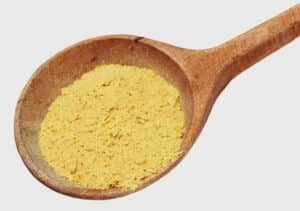 Nutritional yeast: While not the same as bread yeast, this wonderful and flavorful food supplement is loved by vegans for its cheesy and savory flavor. Nutritional yeast is most affordable when purchased at a health food store in bulk bins, but it can also be ordered online. Just make sure that the brand you buy is fortified with vitamin B12 (most are).
Nutritional yeast: While not the same as bread yeast, this wonderful and flavorful food supplement is loved by vegans for its cheesy and savory flavor. Nutritional yeast is most affordable when purchased at a health food store in bulk bins, but it can also be ordered online. Just make sure that the brand you buy is fortified with vitamin B12 (most are).
Vegetable bouillon or quality vegetable broth: I use broth in all my soup recipes instead of water as it imparts a bolder, heartier flavor. Use caution when you buy prepared vegetable broths and bouillon cubes because some brands contain sugar, hydrogenated oils, and MSG. You want to go for a clean label, and my personal favorite is Better Than Bouillon’s Vegetable Base. It’s a vegetable broth paste that you can find in well-stocked grocery stores or online. Make sure the label is vegan, and if you can get it, also organic. Use the instructions on the label to make up your liquid broth for recipes. For some of my recipes I prefer their No-Beef or No Chicken Base (both vegan). I also like the following brands of vegetable bouillon cubes: Edward and Sons, Rapunzel, and Massel.
Bragg Liquid Aminos or tamari: I use Bragg Liquid Aminos as a seasoning almost on a daily basis, often to replace salt. It’s a soy sauce alternative that’s gluten-free and preservative-free. If you aren’t able to find it and don’t have issues with gluten, regular soy sauce can certainly be used. You could also substitute tamari, which is a lovely soy sauce replacement. In most of my recipes, tamari and Bragg Liquid Aminos are interchangeable. Those with soy allergies can use coconut aminos instead of Bragg or tamari. Coconut aminos have less sodium than Braggs or tamari, so adjust the sodium in your recipes accordingly.
 Stevia: The sweet-tasting leaves of this South American plant are extracted and used as a sweetener and sugar substitute. Stevia is calorie-free and doesn’t affect blood sugar levels, and it can be found in almost any grocery store in the sweetener section. If possible, look for versions without any additives. My favorite stevia is made by Nu-Naturals. I use it in all my smoothies, since the sweetness allows me to pack more greens into them. I use both liquid and powdered stevia; having both on hand can be helpful. If you are sensitive to stevia or don’t enjoy it, try using one of these alternative low-calorie sweeteners instead: monk fruit, tagatose, lo han, xylitol, or erythritol. Some of these options have more calories than stevia, but are all low in calories compared to sugar, pure maple syrup, or agave.
Stevia: The sweet-tasting leaves of this South American plant are extracted and used as a sweetener and sugar substitute. Stevia is calorie-free and doesn’t affect blood sugar levels, and it can be found in almost any grocery store in the sweetener section. If possible, look for versions without any additives. My favorite stevia is made by Nu-Naturals. I use it in all my smoothies, since the sweetness allows me to pack more greens into them. I use both liquid and powdered stevia; having both on hand can be helpful. If you are sensitive to stevia or don’t enjoy it, try using one of these alternative low-calorie sweeteners instead: monk fruit, tagatose, lo han, xylitol, or erythritol. Some of these options have more calories than stevia, but are all low in calories compared to sugar, pure maple syrup, or agave.
Tapioca starch: Also called tapioca flour, this starch comes from the cassava root. I use it to give cheesy foods a realistic stretch. I also use it as an ingredient in my gluten-free flour. Tapioca starch can typically be found in the gluten-free section of your grocery store or online. Cornstarch or arrowroot can be used instead of tapioca starch, but results will differ slightly as each has varying thickening abilities.
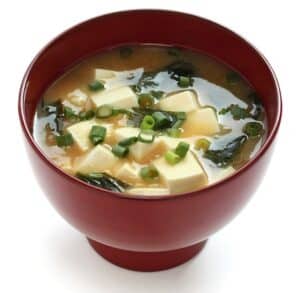 Miso: Typically made from brown rice and soy, this Japanese fermented paste has a lovely pungent flavor and aroma that add a nice umami element to the recipes I use it in. If you have soy allergies, you can source miso made from chickpeas. My personal favorite is mellow white miso. You should be able to find it at any health food store. Chickpea miso can be purchased online.
Miso: Typically made from brown rice and soy, this Japanese fermented paste has a lovely pungent flavor and aroma that add a nice umami element to the recipes I use it in. If you have soy allergies, you can source miso made from chickpeas. My personal favorite is mellow white miso. You should be able to find it at any health food store. Chickpea miso can be purchased online.
Plant milks: For most of the recipes in this book I use unsweetened soy or almond milk. You can use whichever plant milk you prefer, or you can make homemade plant milk; there are lots of recipes online. Keep in mind that unsweetened plant milks are best.
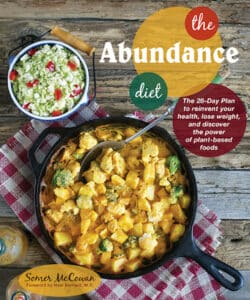 Garbanzo or chickpea flour: Also known as besan gram in Indian markets, this flour is made from ground dried garbanzo beans. I love the versatility of this ingredient. It can be used to replace eggs or create delicious gluten-free dishes. It is healthful, full of protein and fiber. You can find this ingredient at your health food store, online, or at an Indian grocer. I like Bob’s Red Mill brand.
Garbanzo or chickpea flour: Also known as besan gram in Indian markets, this flour is made from ground dried garbanzo beans. I love the versatility of this ingredient. It can be used to replace eggs or create delicious gluten-free dishes. It is healthful, full of protein and fiber. You can find this ingredient at your health food store, online, or at an Indian grocer. I like Bob’s Red Mill brand.
Somer McCowan blogs at Vedged Out.


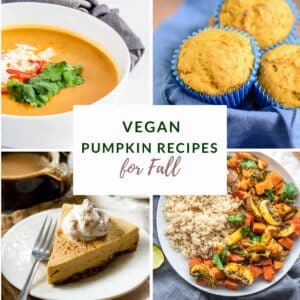
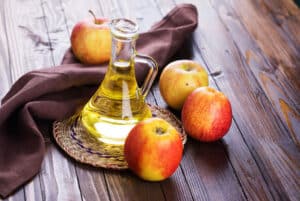
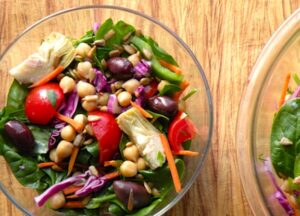
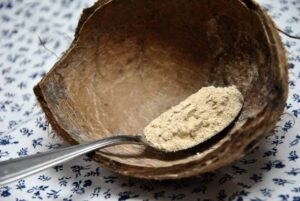
Millie says
Since I love dark chocolate and don't want all the white sugar in regular bars, found Lily's Stevia sweetened dark chocolate. Early Stevia had a funny after taste. Let me assure you that the Stevia used is smooth and mellow the chocolate. There is "original" & "almond". Great topic.